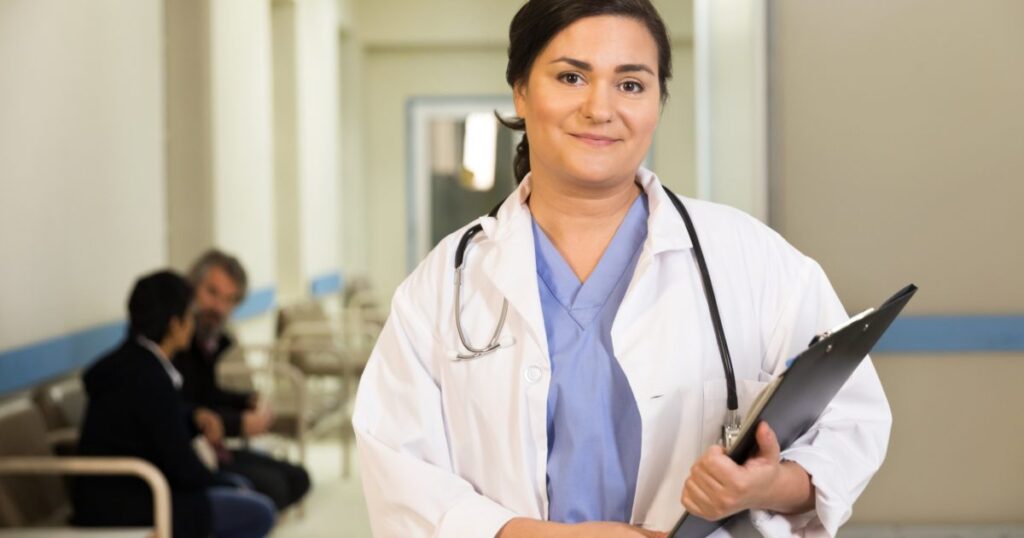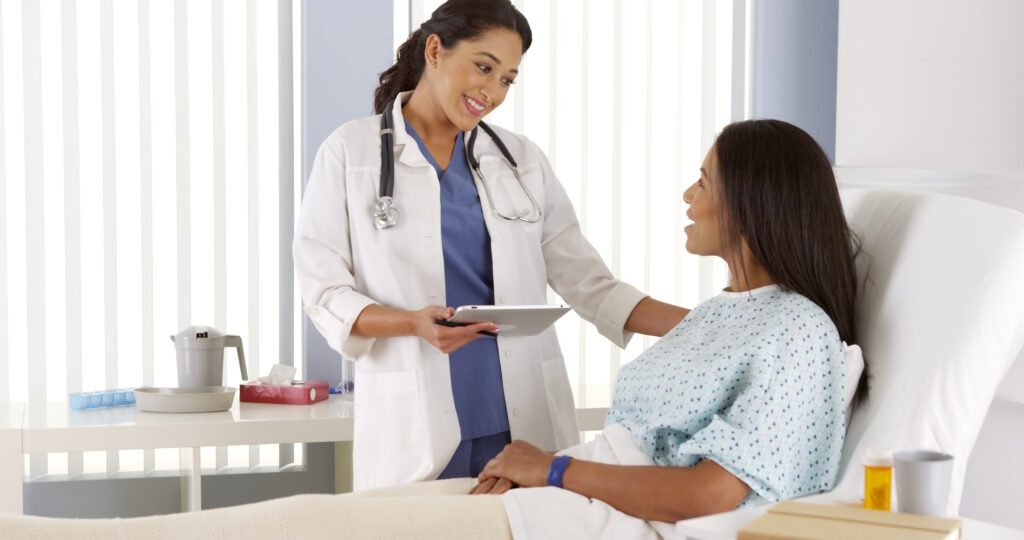Introduction
Women have unique health concerns that require specialized attention. From menstrual cycles to menopause, women’s bodies undergo significant changes and face particular challenges. Understanding and addressing these concerns is vital. This article will explore some critical health concerns of women and discuss ways to manage them.

Women's Health: A Comprehensive Guide to Health, Wellness, Nutrition, Fitness, and Weight Loss
Welcome to our guide on Women’s Health, created to empower women. Discussing women’s health with our comprehensive guide to health wellness, nutrition, fitness, and weight loss! Full of valuable tips and information.

Understanding Women's Health Concerns
Women Have Many Unique Health Concerns
The Top Five Women’s Health Concerns
- Heart Disease
- Breast Cancer
- Gynecological – Ovarian and Cervical Cancer
- Depression and Anxiety
- Reproductive Health Issues
Today, we will explore four of the top five women’s health concerns.
- Breast Cancer
- Gynecological – Ovarian and Cervical Cancer
- Depression and Anxiety
- Reproductive Health Issues

Breast Cancer: Symptoms Risk Prevention
Breast cancer is a significant health issue for women. It is crucial to recognize the symptoms because they increase the chance of developing breast cancer.
Symptoms
- Newly discovered lump in the breast or armpit.
- Swelling or thickening of the breast region
- Breast skin irritation or dimples
- In the breast or nipple area, there is redness or flaky skin
- Pulling in nipple or nipple region discomfort
- Bleeding from the breast, in addition to breast milk
- Any modification to the breast size or form
- Any breast area where you experience
Remember that illnesses other than cancer can cause these symptoms. Visit your doctor as soon as possible if you notice any of these.
Risks
Here are a few risks
- Getting older increases the risk of breast cancer, with diagnoses occurring after age 50.
Inherited gene mutations (BRCA1 and BRCA2) can increase the risk of breast and ovarian cancer.
A menstrual period before age 12 or menopause after age 55 increases the risk of breast cancer.
Dense breasts have more connective tissue than fatty tissue, making tumors on a mammogram hard to see. Women with dense breasts are more likely to get breast cancer.
A history of breast cancer or non-cancerous breast disease increases the recurrence risk.
Family history of breast or ovarian cancer risk increases if her mother or sister has had breast or ovarian cancer.
Radiation therapy to their chest or breasts before age 30 puts women at risk of breast cancer.
Exposure to the drug diethylstilbestrol (DES): Women who took DES risk getting breast cancer. Used to prevent miscarriage in pregnant women between 1940 and 1971. Women whose mothers took DES while pregnant with them also risk breast cancer.
Prevention
How does prevention work?
Cancer prevention aims to lessen the likelihood of developing the disease. A group or population’s risk of developing cancer is reduced by preventing it. Hopefully, this will lessen the impact of cancer and the number of cancer-related fatalities.
Cancer
Cancer is a family of connected diseases rather than a single illness. Our genes, lifestyle, and external environment influence our cancer risk. These elements all determine a person’s chance of developing cancer.
Cancer Risks Factors
Anything that raises your risk of getting cancer is referred to as a cancer risk factor, and anything that lowers your risk is referred to as a cancer protective factor. Many cancer risk factors cannot be avoided, but some can.
Smoking Is A Risk Factor
For instance, smoking and having particular genes are risk factors for developing specific cancers, but only smoking may be prevented. A good diet and regular exercise may be preventative measures for certain cancers.
There Are No Guarantees
Although reducing risk factors and boosting preventive variables may reduce your likelihood of developing cancer, this does not guarantee it.
Studies on various cancer prevention strategies include:
- Altering one’s way of life or diet.
- Avoiding cancer-causing things.
- Taking medication to treat a precancerous disease or prevent cancer from developing.
- Surgery that lowers risk.

Gynecological - Ovarian and Cervical Cancer
Ovarian cancer
What is ovarian cancer?
Ovarian cancer occurs when cancerous cells are found in the ovaries, fallopian tubes, or peritoneum. The ovaries are where eggs are produced in females. Various cases of ovarian cancer can start in the fallopian tubes, which travel from the ovaries to the uterus. Cancer can begin in the peritoneum, a delicate tissue that lines the organs and the abdomen’s inner wall.
Causes
The cause of ovarian cancer is uncertain, but researchers have proposed theories based on risk factors. Inherited or acquired genetic changes cause cells to become cancerous. For example, You will have an increased risk of cancer if you have a mutation in the BRCA1 and BRCA2 have increased the risk of ovarian cancer.
You will have an increased risk of cancer if you have a mutation in the BRCA1 or BRCA2 gene. Remember that there is a higher possibility that you will develop cancer, not that you will get cancer.
Pregnancy and birth control lower the risk of developing ovarian cancer. Researchers think this suggests ovulation plays a role in causing ovarian cancer. Another theory is that cancer-causing substances could enter the body through the vagina and pass through to the uterus or fallopian tubes to the ovaries. Talc is a cancer-causing substance that can cause cancer.
Symptoms
Signs and symptoms of ovarian cancer:
Bloating
Pain in the stomach or pelvis
Struggling to eat or feeling full right away.
Stomach pain and swelling
Pain during sex
Persistent urge to urinate.
Changes in the pattern or intensity of periods
Weight loss
Diagnosis
Anyone with signs or symptoms of ovarian cancer should contact a doctor for a checkup.
A doctor will check a person’s medical and family history for ovarian cancer risk factors. As well as a pelvic examination, checking for enlarged ovaries or fluid in the stomach.
In case of cancer indications, a doctor may propose further examinations, which could involve:
Imaging, such as an MRI or ultra scan
Blood tests, such as CA-125 tests
Biopsies
Genetic testing
Outlook
The outlook for ovarian cancer will depend on several factors, including. Early detection, tumor spread, and the person’s overall health factors help to evaluate your ovarian cancer outlook. It will also vary by the type of ovarian cancer.
The National Cancer Institute states that at least five years is the duration that ovarian cancer patients can survive.
Women with localized and regional ovarian cancer survive at least five years if cancer has not spread far from its original site.
However, only thirty-one percent of patients with Metastatic (distant) ovarian cancer survive five years when cancer spreads to distant body parts.
What is cervical cancer?
When malignant cells grow in the cervix, it results in cervical cancer. The cervix connects the uterus, where a baby develops during pregnancy, to the vagina.
Women over 30 are more likely to develop cervical cancer.
Causes
Genetic mutations, which cause unregulated cell growth and replication in the body, can cause cancer.
However, the root issue in ongoing human papillomavirus (HPV) infection is a reliable source of cervical cancer growth. HPV is an infection transmitted through sexual contact.
Symptoms
The American Cancer Society lists the following as typical symptoms and indicators of cervical cancer:
Unusual vaginal hemorrhage, such as bleeding during sex or after menopause, pelvic pain during sex, etc.
There seems to be irregular vaginal discharge that is causing concern.
There seems to be swelling present in your legs.
You are facing difficulty passing stool or blood in the urine.
Diagnosis
Doctors use Pap or HPV tests to screen for cervical cancer. HPV test checks for HPV, and Pap test screens for cancerous cells.
Someone with cervical cancer symptoms or a positive screening result will see a gynecologist for a diagnosis. Review the patient’s medical history, and a pelvic physical will make the diagnosis.
They could perform colposcopies or biopsies as further tests.
To confirm cervical cancer, the doctor may order MRI scans or cystoscopies.
Outlook
Cervical cancer prognosis depends on stage, spread, and other factors.
According to the American Cancer Society, the 5-year survival rate for cervical cancer is 66%. This shows that individuals live for at least five years following a cervical cancer diagnosis.
However, if the cancer spreads to other bodily areas, 17% of patients survive.

Depression is quite common in females. Women are twice as likely as males to have clinical depression. And they have a high possibility of experiencing a major depressive episode at a rate of one in four.
Depression: What Is It?
A pervasive and dangerous mood disorder. Clinical depression makes people feel sad, hopeless, unworthy, and powerless. Some symptoms are apathy, poor appetite, trouble sleeping, and low self-esteem.
What are the Signs of Depression Exhibited by Women?
- Prolonged sadness or anxiety
- Loss of enjoyment or interest in activities, such as sex
- Anger, irritability, or excessive sobbing
guilty, unworthy, powerless, hopeless, and pessimistic emotions - Excessive or little sleep, early morning awakening
- Appetite, weight loss, or weight gain due to overeating
- Diminished energy, tiredness, and a sense of “slowed down.”
- Suicidal ideas, suicide attempts, or death thoughts
Difficulty paying attention, remembering things, or decide - Persistent physical complaints that don’t go away despite treatment, like migraines,
- Gastrointestinal issues and chronic discomfort
Anxiety
Women Are More Likely To Experience Anxiety and Depression
Depression in women is a feeling that makes them very sad and down for a long time. It’s like a dark cloud hanging over them, making it hard to feel happy or excited about things they used to enjoy. Sometimes, it can feel like there’s no energy left to do things, and even simple tasks might seem difficult.
Depression can happen because of a mix of things like how our bodies work, things happening around us, and how we feel inside. For women, things like changing hormones during growing up, becoming a mom, or going through different life stages can make them more likely to feel this way.
But the good news is that there’s help available! Women can talk to doctors, therapists, or counselors who are really good at understanding these feelings. They can help figure out why someone might be feeling this way and teach them ways to start feeling better. Also, talking to friends and family can make a big difference too, because they can offer support and understanding.
If someone you know needs help, you can encourage them to talk to a grown-up they trust, like a parent, teacher, or school counselor. Here are some places where they can find more information and support:
Depression and anxiety are distinctly two different conditions.
We want to be clear that anxiety and depression are two different symptoms before we discuss why women are more likely to experience these two of the more prevalent mental illnesses. Even though these mood disorders are sometimes grouped, anxiety and depression are completely different conditions that can exist independently or concurrently but should not be seen as interchangeable.
Anxiety Disorders: What Are They?
Anxiety is a familiar feeling. It’s how your brain responds to stress and warns you of impending danger. Everybody has occasional anxiety. For instance, you might worry when faced with a challenge at work, before a test, or before making a crucial decision.
Periodic anxiousness is OK. Anxiety disorders, however, are distinct. They are mental conditions that produce unrelenting, intense worry and fear. You may avoid activities such as work, school, family gatherings, and other social events because your extreme anxiety could exacerbate your symptoms. Everyone experiences occasional worry or tension when it comes to anxiety.
However, anxiety disorders raise the stakes and frequently cause the following symptoms:
- Excessive anxiety or
- Nervousness
- Irrational fear
- Decline interest
- Rapid breathing or heartbeat
- Difficulty sleeping
- Digestive disorders
- Anxiety can strike suddenly as a panic episode

Reproductive Health Issues
Sexual and Reproductive Health
The Female Reproductive System
Common Reproductive Health Concerns for Women
- Endometriosis.
- Uterine Fibroids.
- Gynecologic Cancer.
- HIV/AIDS.
- Interstitial Cystitis.
- Polycystic Ovary Syndrome (PCOS)
- Sexually Transmitted Diseases (STDs)
- Sexual Violence.
We will discuss four specific sexual and reproductive health problems for women.
- Menstruation
- Sexually Transmitted Diseases and Infections
- Birth Control and Pregnancy
- Menopause
Menstruation
What is a period?
When you menstruate, also known as getting your period, blood and uterine tissue leak out of your vagina. Typically, it takes place each month if you don’t become pregnant.
What is the menstrual cycle?
Every month, on average, 28 days, your menstrual cycle supports your body preparing for pregnancy. If you have not become pregnant, it causes your period. Hormones like estrogen and progesterone regulate your menstrual cycle and period.
Your Ovaries
You have two ovaries, and each ovary houses several eggs. The eggs are so small that they cannot be seen with the naked eye. Hormones in your body during your menstrual cycle cause the eggs in your ovaries to mature, and once an egg is mature, it is ready for sperm cell fertilization.
The Uterus
The lining of your uterus becomes thick and spongy due to these hormones. So that when or if your egg is fertilized, it will have a cozy spot to settle and begin pregnancy. The lining comprises tissue and blood, a nutrient-rich environment that will aid in pregnancy growth.
What is Ovulation?
Your hormones instruct one of your ovaries to release a mature egg halfway through your menstrual cycle, known as ovulation. The process of an egg being released from the ovary is called ovulation.
The Fallopian Tube
The egg is released and travels down the fallopian tube, where it remains for 12 to 24 hours before being fertilized. Ovulation symptoms are bloating, spotting, or a slight soreness in your lower belly. The majority of people don’t experience these symptoms.
Your Egg
After leaving your ovary, the egg goes through one of your fallopian tubes and into your uterus. If you don’t get pregnant, your body doesn’t require the thick uterine lining, so it degrades. As your uterine lining degrades, blood, nutrients, and bodily tissue pass through your vagina and leave your body. You now have a period!

Sexually Transmitted Diseases and Infections
What Is The Difference Between STI and STD?
STI and STD are “sexually transmitted infection” and “sexually transmitted disease,” respectively. However, regardless of the terminology used, everyone refers to illnesses transmitted through all types of intercourse. Most STDs affect both men and women. However, women experience more severe health issues as a result.
Women Experience More Severe Health Issues
Over the years, these illnesses have gone by a variety of names, including venereal disease (VD), “the clap,” “the drip,” and, most recently, STD and STI. The most current term is STI; healthcare professionals and educators went from STD to STI because “infection” is more accurate and less derogatory than “disease.” Let’s deconstruct it:
Infection
When a virus, bacteria, or parasite enters your body, your immune system works to combat it. This is when an infection develops. When infection leads to symptoms, physical harm to body components, and eventual illness, the disease has occurred. Many infections do not progress to illnesses.
Disease
Most STIs never progress to the disease stage; occasionally, a person may not even know they have one. STIs typically don’t manifest symptoms, and medication is frequently effective in treating or curing them before they cause long-term damage. Additionally, the condition that is spread through sexual contact is an infection rather than a sickness. Thus, using the word “infection” makes more sense.
STI
Furthermore, the word “disease” has a negative and frightening sound. Because STIs may be contracted through sex (and sadly, our culture has many negative attitudes toward sex), there is already a lot of unwarranted stigma around them. It is even more difficult for people to be open with their partners, get tested, and have safer sex—all of which are the best approaches to prevent STIs—when STIs are referred to as “diseases.” Everyone will be healthier the more we can do to combat the stigma and misinformation around STIs.
STD
The problem is that “STD” has been around for much longer and is used by many more people. In hospitals, the majority of patients use the term “STD,” and more individuals look up “STD” than “STI” online. So, because STD is the term most people are familiar with, some health educators, practitioners, and organizations continue to use it.
What is important is that we’re fighting STI stigma, getting tested, and protecting ourselves and one another through safer sex
There are more than 20 types of STDs, including:
- Chlamydia
- Genital herpes
- Gonorrhea
- HIV (human immunodeficiency virus)
- (HPV) Human papillomavirus is the most common sexually transmitted infection.
- Pubic lice
- Syphilis
- Trichomoniasis

Birth Control and Pregnancy
Reproductive health resources allow women to decide what option best suits them. Birth control and reproduction impact a woman’s health, from fertility to preventing pregnancy to transmitted infections.
During pregnancy, women must take preventive care measures, including getting frequent checkups. Getting proper nutrition and rest. As well as recognizing signs of premature labor. Women have an array of birth control choices to choose from.
Always select a method that suits your lifestyle and preferences. Pregnancy is a life-changing journey in a woman’s life, and ensuring optimal reproductive health is crucial.
Birth Control Choices
1. Hormonal Methods: The Pill or Ring
Hormonal methods, such as the birth control pill or vaginal ring, offer women a convenient and effective way to prevent unwanted pregnancies. These methods work by regulating hormones in the body, preventing ovulation, and creating a barrier against sperm. By incorporating hormones, these methods provide high levels of contraception reliability.
2. Barrier Contraceptives: Condoms and Diaphragms
Barrier contraceptives, such as condoms and diaphragms, act as physical barriers that prevent sperm from reaching the egg. They are easy to use, widely accessible, and protect against unwanted pregnancies and STIs. These methods suit women who prefer non-hormonal options or want additional protection.
3. Long-Term Reversible Contraception: IUDs
For women seeking a more long-term birth control solution, intrauterine devices (IUDs) are an excellent choice. These small, T-shaped devices are inserted into the uterus, providing highly effective contraception for several years. Available in hormonal and non-hormonal options, IUDs offer flexibility and peace of mind to women who desire a lower-maintenance birth control method.
Menopause
Hormone Therapy
Medications
Menopause Coping Strategies
Acupuncture Meditation and Herbal Remedies

Empowering Women's Health
Finding the Right Doctor
Women must find a doctor to meet their health needs to receive quality care. Inquire about the qualifications of doctors and local practitioners with expertise in treating women’s healthcare issues. Seek advice from trustworthy friends to find referrals.
Ask questions to ensure this physician will hear and address your concerns. For certain individuals, free or inexpensive medical services may be available. When selecting a doctor, women become more empowered when making decisions regarding their well-being.
Utilizing Resources for Women's Health
Women have a wealth of resources to assist in managing their health. This includes online platforms for information, resources, support groups, and medical professionals who can help them stay informed on issues related to healthcare, make decisions with confidence, and get access to the care they require.
They can use these resources through web searches or referrals from healthcare specialists and join local support networks, ensuring that women remain aware of matters of concern regarding well-being, make sound judgments about treatments available, report, and gain entry into necessary services.
Advocating for Your Health
A reliable healthcare provider is paramount to advocating for one’s health rights, so identifying doctors who understand an individual’s needs and offer the best care possible should be at the forefront.
There are plenty of resources available online for women’s health rights. Such as support groups and organizations that provide relevant information. Dealing with difficult situations in healthy ways can help build resilience, which promotes better overall wellness.

The Role of Nutrition in Women's Health
The importance of nutrition to a woman’s health is undeniable: having an adequate intake of vitamins, minerals, proteins, carbohydrates, and healthy fats helps women maintain body weight.
Women must consume all essential nutrients to sustain their well-being and avoid illnesses. We will look at different nutritional needs regarding women’s health during various periods (such as pregnancy or menopause) with information on a balanced diet plan.
Health is important for women; essential vitamins, minerals, and micronutrients must be consumed to maintain it. Vitamins and minerals are required nutrients that help maintain strong bones and teeth. As well as keeping skin healthy while managing metabolism.
Macronutrients offer energy from carbohydrates, proteins, and fats. Necessary not only for physical activity but also to retain a fit body weight while regulating hormones. Lastly, the micronutrient role comes into play, providing tiny amounts of vital vitamins with benefits like regulating metabolism against disease.
Creating a Balanced Diet
Women should aim to have a balanced diet that includes foods from all food groups. This includes consuming carbohydrates for energy and proteins for growth. Fats for cell structure and hormone production, vitamins/minerals for bodily functions.
Drinking plenty of water to stay hydrated. Eating in this manner can be beneficial to support a healthy weight range. Warding off chronic diseases while providing the necessary nutrients for optimal health.
Special Considerations for Pregnancy and Menopause
When it comes to female health during significant life transitions like pregnancy and menopause, women should obtain essential nutrients such as iron, calcium, folate, and vitamin D.
This will help provide adequate nutrition for the mother’s body and the developing baby. Women transitioning into or already in menopausal stages must get enough nutrients. Plus, pay attention to their weight and eat a well-balanced diet.

Benefits of Exercise for Women
Creating a Fitness Routine
Weight Loss Strategies for Women
Women should consider losing weight and eat less processed carbs. Add resistance training and consume more protein. And create regular sleep habits. Drink water to stay hydrated. Keeping nutritious food choices visible will help in dropping extra pounds.
Remember always to explore healthy snack choices. Eating less refined carbs and sugar can reduce your calorie count and promote good glucose levels. Resistance exercising can build muscle and burn calories.
Taking time to breathe or practice mindfulness techniques is always a good idea. It minimizes stress and nervousness when trying to lose weight. Boosting your energy level and promoting weight reduction. Which can lead to successful long-term results.

Mental Health and Emotional Well-being
Healthy thinking allows you to manage stress, foster resilience, and find help. This article focuses on stressors, building robustness, and gaining professional help.
Stress Management Techniques
Building Resilience and Coping Skills
Seeking Support and Professional Help
Support and Professional Help for Depression
If someone you know needs help, you can encourage them to talk to a grown-up they trust, like a parent, teacher, or school counselor. Here are some places where they can find more information and support:
National Alliance on Mental Illness (NAMI): NAMI has resources and support groups for people dealing with mental health issues, including depression. Visit their website: https://www.nami.org
Mental Health America: They offer information, screenings, and resources for mental health concerns. Check their website: https://www.mhanational.org
Psychology Today: Their directory helps you find therapists and counselors near you: https://www.psychologytoday.com
Remember, it’s important to let adults know if you or someone you know is struggling with these feelings, so they can help find the right support. You’re doing a great job by seeking information to understand better!
Support and Professional Help for Breast Cancer Patients
1. American Cancer Society: The American Cancer Society provides various resources for breast cancer patients, including information on diagnosis, treatment, support programs, and patient navigation. Visit their website at https://www.cancer.org/cancer/breast-cancer.html.
2. National Breast Cancer Foundation: This organization provides free mammograms for women in need, as well as educational resources, support services, and a help hotline. You can find more information at https://www.nationalbreastcancer.org/.
3. BreastCancer.org: BreastCancer.org is a comprehensive resource for breast cancer patients, offering information on diagnosis, treatment options, and a supportive online community. Access their website at https://www.breastcancer.org/.
4. Susan G. Komen: Susan G. Komen is a well-known nonprofit organization dedicated to breast cancer research, education, and support. They provide resources, financial assistance programs, and support groups. Explore their website at https://ww5.komen.org/.
5. CancerCare: https://CancerCare.org offers a variety of support services, including counseling, support groups, educational workshops, and financial assistance programs for breast cancer patients and their families. Learn more
Summary
This guide has provided information on women’s health, such as distinct conditions and the importance of good nutrition, fitness, and mental well-being. By gaining this knowledge, you have taken a step towards self-care – allowing for informed choices that can lead to more contentment with one’s life through implementing positive modifications and changes. To embark upon your journey to improved health requires understanding all aspects and dedicated effort to follow through
Frequently Asked Questions
Q1. What are five female health concerns?
A1. Women’s health and well-being is essential, and it involves looking into specific issues of concern, such as heart disease, cancer, osteoporosis, depression and HIV/AIDS. Staying informed about these matters to reduce the associated risks can be vital for one’s health.
Q2. What tests should a woman have every year?
A2. Women should speak to their healthcare provider about the recommended screenings they need each year. These could include pap smears, breast exams and mammograms, cholesterol tests, colonoscopies, and bone density scans. Regularly getting these examinations can help detect any health issues earlier, allowing for better management of diseases or conditions and reducing severe complications. Early detection is critical to improving overall outcomes and being proactive regarding women’s health.
Q3. What is the Healthy Texas Women Program?
A3. The Healthy Texas Women Program offers healthcare services to women, such as birth control and pregnancy tests, with counseling options available. They provide health screenings and treatments for hypertension, diabetes, or cholesterol-related issues.
Q4. How can I find the right doctor for my specific health needs?
A4. To ensure that the doctor you talk to is qualified and knowledgeable in addressing your health issues, you must take time for research, ask for referrals from people you trust and talk to, and ensure they are experienced. This way, you can find a suitable medical professional tailored to your needs.
Q5. What are some essential nutrients for women’s health?
A5. Nutrients for women are essential to maintain a healthy lifestyle and should include all necessary components – vitamins, minerals, proteins, carbs, and wholesome fats. These nutrients have several functions that benefit overall health, such as providing energy levels throughout your day or repairing cell damage. They also aid digestion processes while helping manage hormone production within the body and bolstering our immune systems, which are then reflected in skin appearance.
Add Your Heading Text Here
Lorem ipsum dolor sit amet, consectetur adipiscing elit. Ut elit tellus, luctus nec ullamcorper mattis, pulvinar dapibus leo.
Share via:

